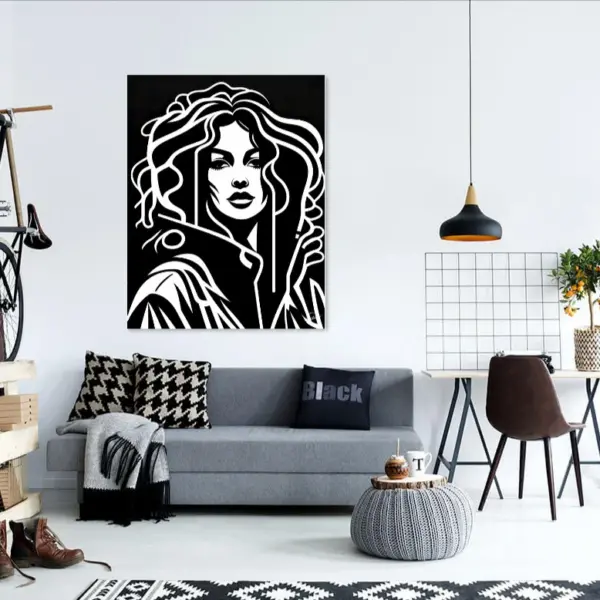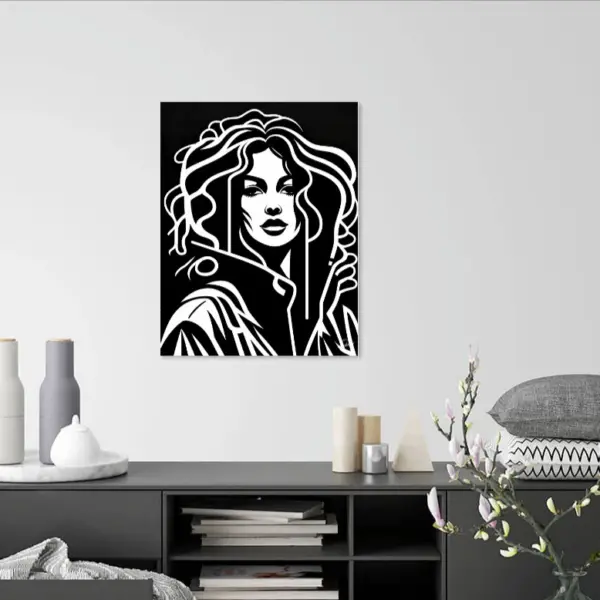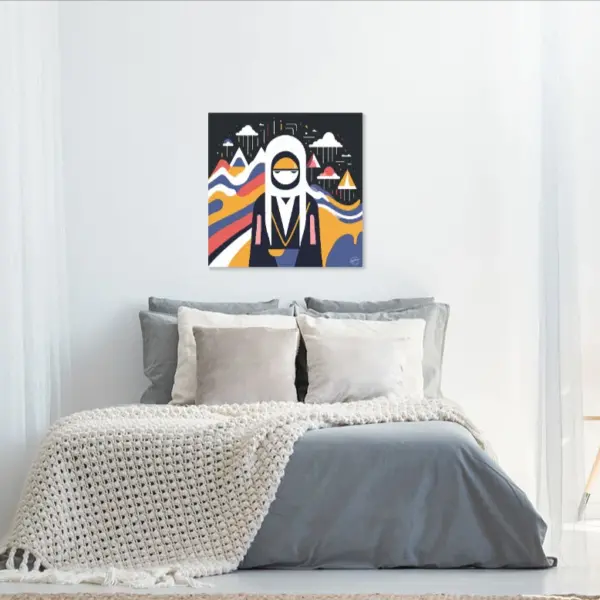Soul Reflection G
The two figures—feminine, stylized, and gracefully angular—are intertwined in a manner that suggests both intimacy and separateness. They lean into one another, but their expressions are distinct. One face is slightly in shadow, eyes half-closed as though lost in deep thought or quiet contemplation. The other, positioned slightly higher and more forward, has its eyes half-opened, offering a serene, watchful presence. This is a portrait not of two women, but of one spirit split across two selves—a metaphor for the different faces we present to the world and to ourselves. It’s as if we are witnessing the inner dialogue between the conscious and the subconscious, the public persona and the private soul.
The artist has employed a sharp, geometric approach to the composition, transforming soft human features into angular planes and hard edges. This stylization feels deliberate, evoking a sense of strength and clarity in the faces while simultaneously breaking them down into their constituent parts. There is something cubist in the fragmentation, as if to say that no single perspective can fully capture the entirety of a person’s identity. The geometry fractures and reforms the figures, reminding the viewer that identity is always in flux, always shifting between the poles of who we are and who we wish to be.
In Soul Reflection G, the interplay of black, white, and shades of grey underscores the duality at the heart of the piece. The monochrome palette strips away distractions, leaving us to focus on form, line, and structure. Black and white become symbols—of light and shadow, of certainty and doubt, of presence and absence. The grey tones act as the liminal space between these extremes, representing the in-between moments of uncertainty, where the soul hesitates, reflects, and reevaluates.
One of the most intriguing aspects of this work is the sense of calm that pervades it. Despite the sharp angles and the deep contrast in the use of color, there’s a tranquility that radiates from the figures. Their expressions are not conflicted but peaceful, as though they’ve reached an understanding with themselves and with each other. There’s no tension in their duality, only a soft, meditative harmony. This suggests that the relationship between the two figures is not one of conflict, but of reflection. They are not opposing forces battling for dominance, but rather two parts of the same whole—each necessary to complete the other.
The background of the piece, dotted with stars and abstract shapes, adds to the ethereal quality of the work. It suggests a cosmic space, as though the figures are floating in a vast, unknowable universe. But the celestial imagery also works on a symbolic level. The stars, points of light against the dark backdrop, could represent the moments of clarity we experience when we reflect on our lives and our inner worlds. The space between these stars—the blackness—might symbolize the unknown, the parts of ourselves that remain hidden or undiscovered. These contrasting elements create a sense of balance, reinforcing the theme of duality and unity.
What is particularly striking is how the figures seem both connected and isolated at the same time. Their faces are entwined, their proximity suggesting a deep bond, yet there’s a clear delineation between the two. They are individuals, but they are also one. This duality hints at the complex relationship between self and other, between the parts of ourselves we share and the parts we keep hidden. The faces seem to be engaged in a silent conversation, their proximity indicating intimacy, but their expressions are distant, as if lost in thought. They are together, but alone—a reflection of the human experience itself.
The earrings worn by both figures, long and geometric, could be seen as symbolic elements. They hang delicately from each ear, suggesting a grounding force amidst the floating, cosmic imagery. Earrings, traditionally associated with adornment and identity, could be interpreted here as symbols of self-expression. The fact that both figures wear them reinforces the idea of unity between the two, despite their differences.
The title, Soul Reflection G, adds another layer of meaning. The word “reflection” suggests introspection, a looking inward. This is not merely a visual reflection, as in a mirror, but a deeper, more soulful reflection—an examination of the inner self, the hidden parts of our identity that we rarely share with the world. The “G” in the title remains ambiguous, inviting multiple interpretations. Could it stand for “Goddess,” elevating the figures to a divine status? Or perhaps it refers to “Geometry,” a nod to the angular, structured style of the piece? The ambiguity of the title invites the viewer to project their own meaning onto the work, much like the figures themselves invite reflection and introspection.
Ultimately, Soul Reflection G is a meditation on the complexities of identity, on the interplay between light and shadow, self and other, inner and outer. The figures, while distinct, are incomplete without each other, just as we are incomplete without our own reflections, our own deeper understanding of who we are. The work leaves us with a sense of stillness, of quiet contemplation, as though the figures have found peace in their duality—and perhaps, through looking at them, we might find a little peace in our own.

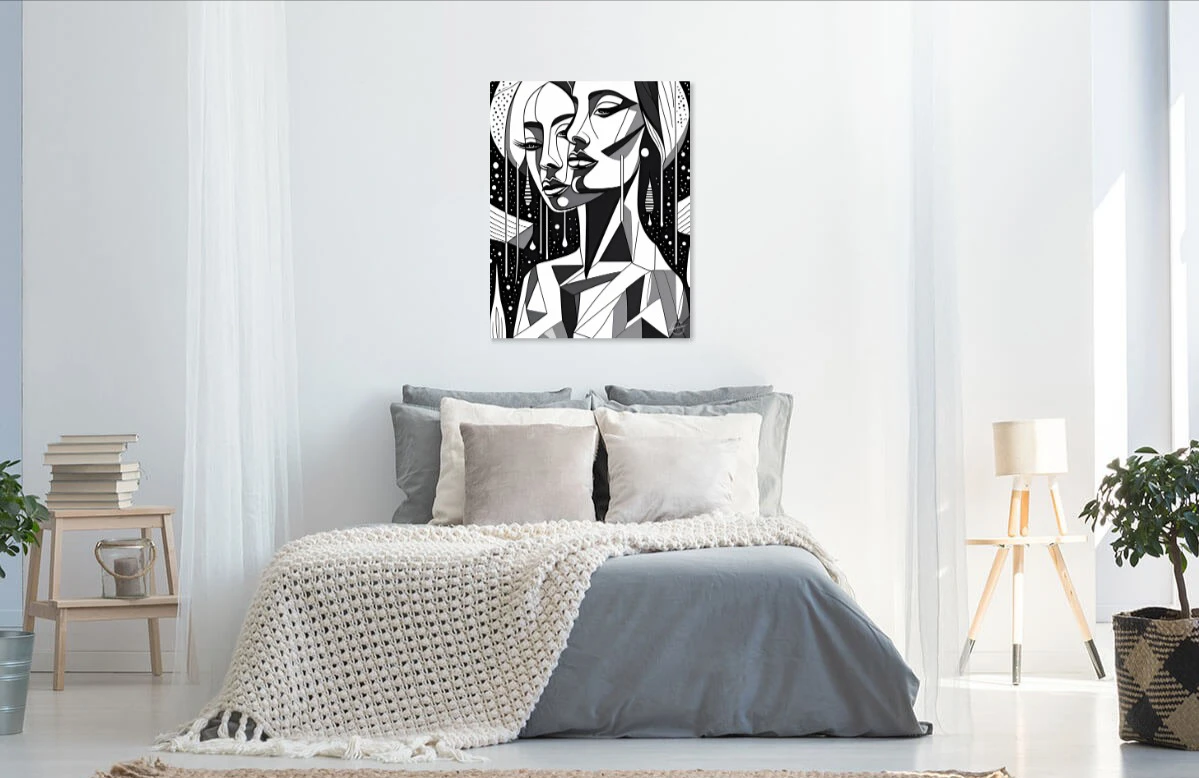
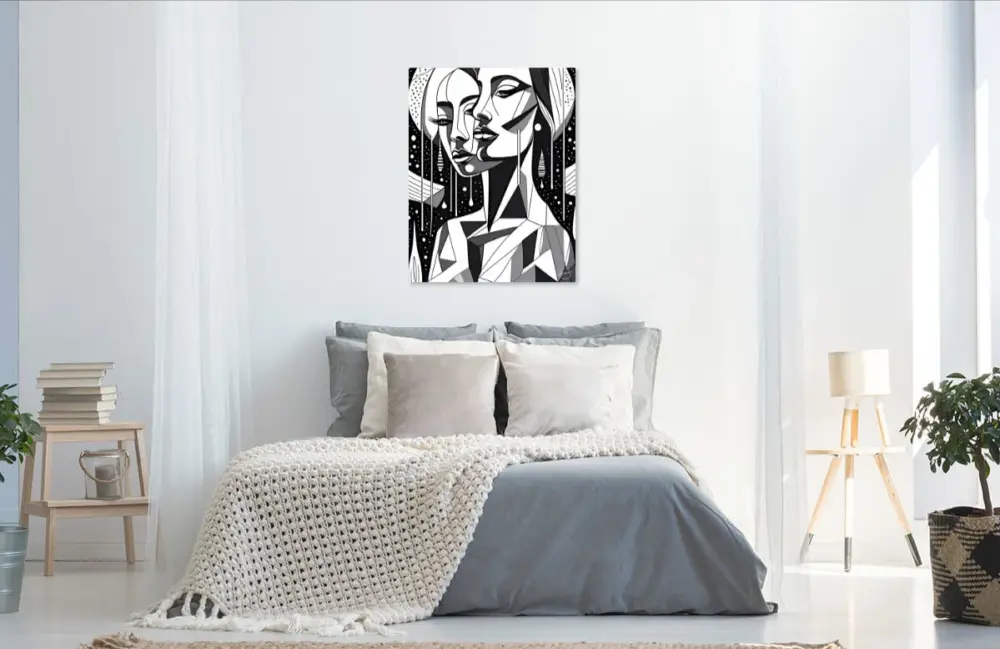
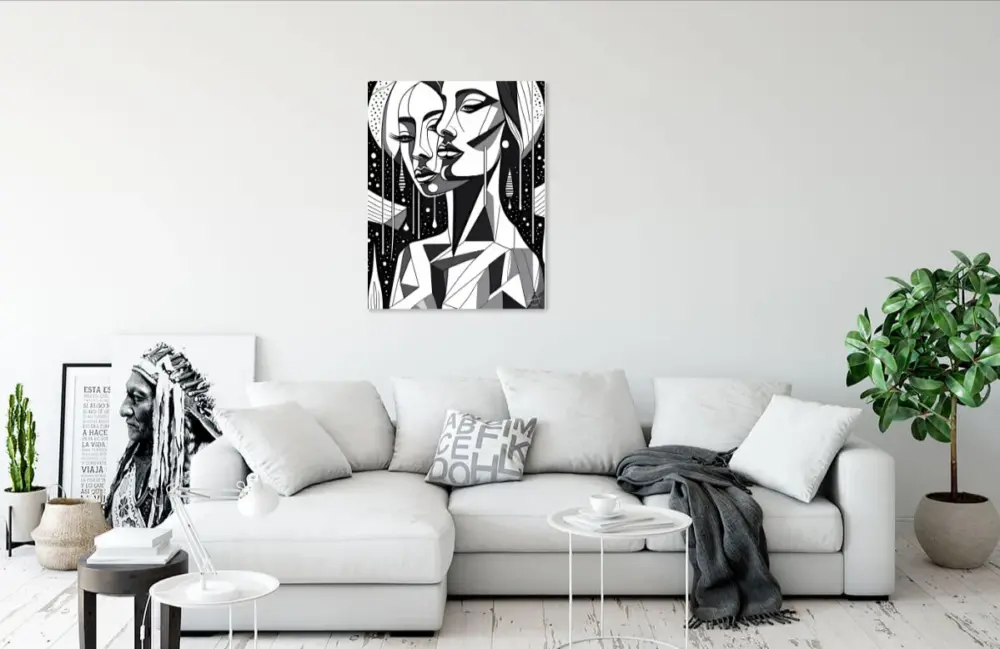


 70-140cm (27.5″≈55″) Printable
70-140cm (27.5″≈55″) Printable